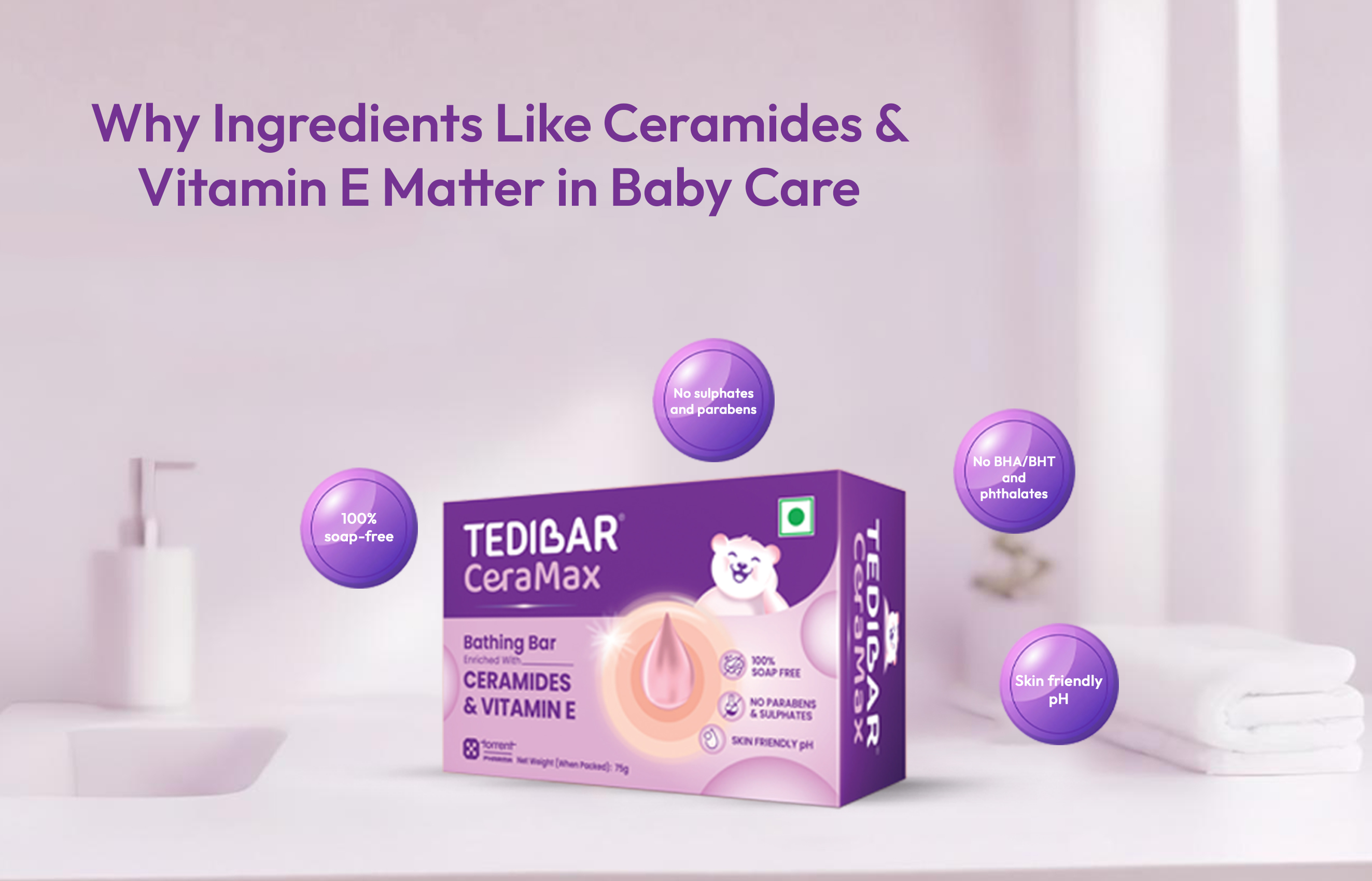

Embracing Parenthood: How to Manage Cradle Cap
2023-08-15 - Tedibar Body Wash
Blog Summary
Baby Skin
There’s nothing softer than your newborn’s little head of hair. You could spend all day running your fingers through their tiny curls. Until, of course, the dreaded cradle cap strikes.
If you’ve ever noticed greasy, crusty scales on your little one’s scalp, then you know exactly what we’re talking about. But what causes cradle cap and how can you prevent it? Let’s take a look.
What is Cradle Cap?
Cradle cap, medically known as infantile seborrheic dermatitis, is a harmless baby scalp condition that affects many newborns and infants. Cradle cap’s symptoms are easy to spot, it manifests as greasy, yellowish or white scales that develop on the baby's scalp. Although cradle cap may look alarming, it is generally not itchy or uncomfortable for your little one.
What to Look Out For?
The primary symptom of cradle cap is the presence of scaly patches on your baby's scalp. These patches may appear thick, crusty, or oily and can range in size from small dots to larger flakes. While cradle cap mainly affects the scalp, it can occasionally extend to the eyebrows, eyelids, ears, or neck. It's important to note that cradle cap is not contagious, so you needn't worry about your little one spreading it to others.
Cradle Cap Causes
The exact cause of cradle cap remains unknown, but several factors may contribute to its development. Here are a few possible causes:
1. Overactive sebaceous glands: Your baby's sebaceous glands, which produce an oily substance called sebum, might become overactive. This excess sebum can accumulate on the scalp, which causes the formation of scales.
2. Hormonal factors: Hormones passed from the mother to the baby during pregnancy can also play a role in the development of cradle cap. These hormones can stimulate the baby's sebaceous glands, resulting in the production of more sebum.
3. Fungal infection: A type of yeast called Malassezia may contribute to cradle cap. This yeast is naturally present on the skin and, in some cases, can proliferate, causing an overgrowth that leads to the development of cradle cap.
How to Manage Cradle Cap
Although cradle cap causes no harm and usually resolves on its own, you can take some steps to manage it. Here are a few tips on cradle cap treatment for babies:
1. Apply oil or petroleum jelly: Before washing your baby's hair, you can apply a small amount of baby oil to the affected areas. This can help soften the scales and make them easier to remove during washing.
2. Gently washing: Regularly washing your baby's scalp with a mild baby shampoo, such as Tedibar Spoo Tear Free shampoo, can help loosen and remove the scales. Gently massage the shampoo into the scalp, make sure not to rub hard as this can cause irritation.
3. Use a soft brush: After massaging the scalp, use a soft brush or comb specifically designed for babies to gently brush away the loosened scales. Be careful not to apply too much pressure to avoid irritating the delicate skin.
4. Avoid scratching: Discourage your little one from scratching or picking at the scales, as this can lead to skin irritation or infection. Keep your baby's nails trimmed short to minimise the risk of accidental scratching.
5. Consult a paediatrician: If the condition persists or becomes severe, consult your paediatrician for further guidance. They may recommend specific medicated shampoos or creams to alleviate the condition.
Remember, cradle cap is a common occurrence in newborns and infants, and is usually temporary. With gentle care and patience, you can better manage and avoid this baby scalp condition.
Sensitive Skin
Skincare Notes & Tips
- Your baby’s skin and immune system are sensitive, so it’s important to adopt a skincare routine to shield your little one’s skin from germs.
- Newborn babies have naturally wrinkly skin coated in vernix, a waxy covering that peels off on its own after a while.
- Avoid rubbing off the vernix or slathering lotion over it; when it comes to basic newborn skincare, follow the golden ‘less is more’ approach.
- Diaper rashes are common amongst babies; to avoid them, clean your baby’s bottom with warm water at each change, and let the area dry before putting on another diaper.
- Diaper rashes do not normally warrant medical attention, but if they do not clear up in two to three days, consult a dermatologist. Wash your baby’s clothes, bedding and blankets separately with mild, fragrance-free and dye-free detergents.
- Massage your baby daily; studies have shown that babies thrive on touch and that babies massaged daily cry less often, feel loved and sleep longer.
Bathing Notes & Tips
Bathing Notes & Tips
- You might notice that your baby enjoys splashing in bath water, but try to keep baths short and sweet to avoid drying your baby’s skin.
- Use mild, baby-friendly soap during bath time and make sure not to rub the soap on your baby’s skin too harshly, as this can dry it out.
- Keep bath water lukewarm
Moisturise your baby’s skin with fragrance-free baby lotion after each bath. - Restrict baths to two to three times a week; bathing your baby too often can cause their skin to dry out by stripping it of natural oils.






